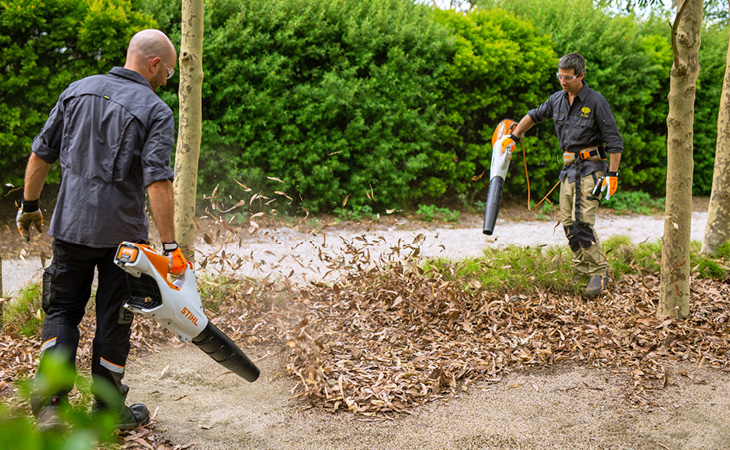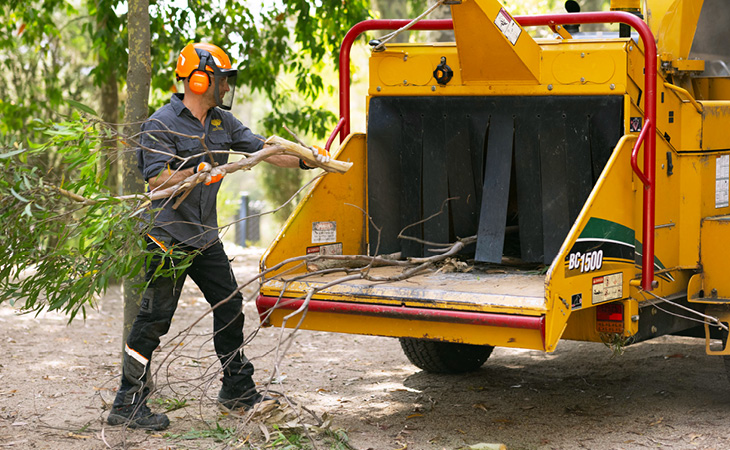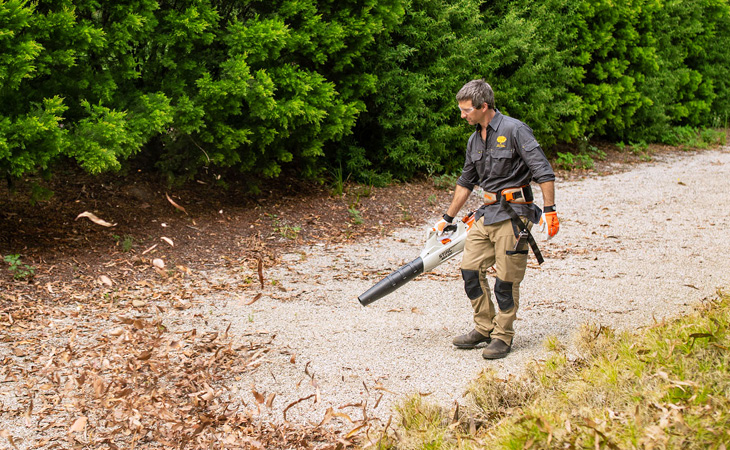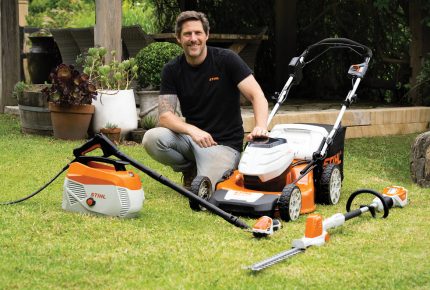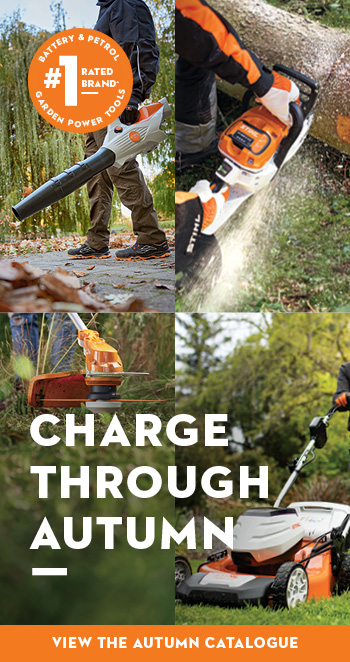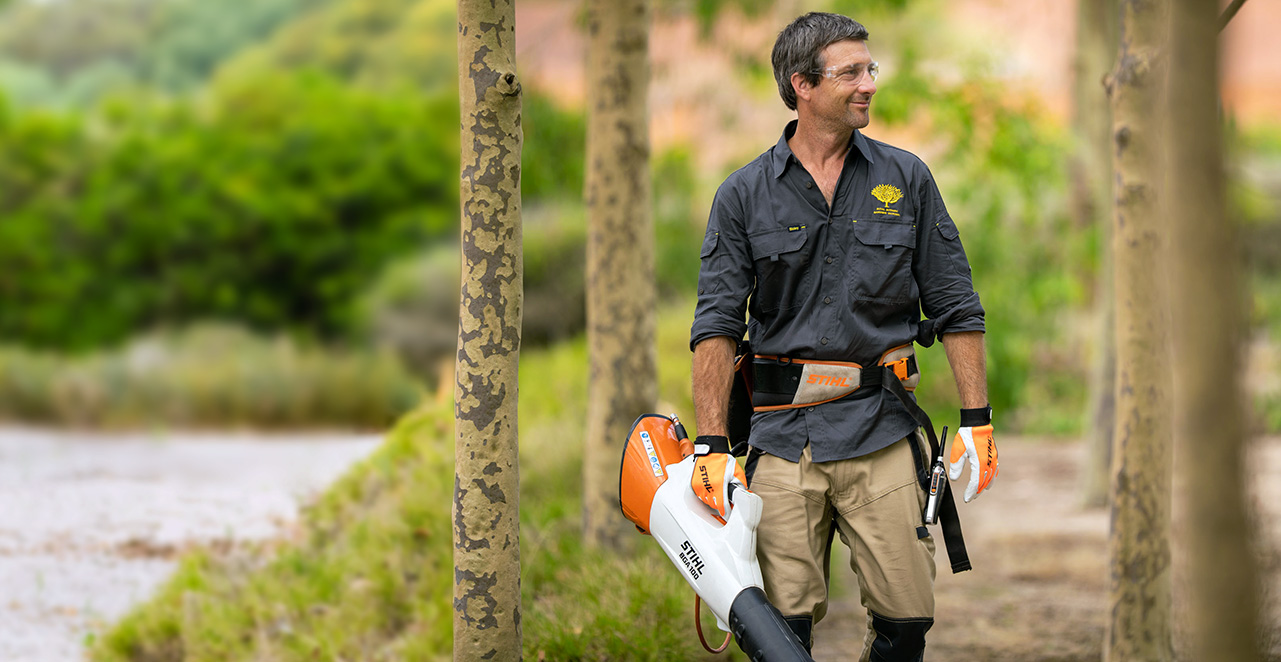
#Inspiration
AUTUMN REBOOT: LEAF AND DEBRIS MANAGEMENT WITH ROYAL BOTANIC GARDENS CRANBOURNE
Royal Botanic Gardens Cranbourne in Victoria is home to over 1,400 rare and endangered species, including hundreds of native Australian trees. From snowgum seedlings to mature melaleucas, the windy Autumn season is when they drop the most leaves and bark. It’s for this reason that leaf and debris management is a key task in the Gardens’ ‘Autumn reboot’ process – it’s a time conditions are ideal for reviving the landscape after Summer.
STIHL’s resident garden expert Charlie Albone caught up with the Gardens’ arboriculture manager Charlie Carroll to talk about the tasks, tools and maintenance required to keep the award-winning public space looking pristine.
Leaf litter clean-up
Tree maintenance
‘Although there are mostly Australian trees at Cranbourne Gardens, what you don’t realise is that a lot of these trees – over a season, or at least a 12-month period – will lose all their leaves. So they’re considered evergreen, but they still drop all their leaves in a season,’ says Charlie Carroll, whose team is continually inspecting the 360 acre green space. It’s this routine maintenance, which involves crown thinning (or ‘cleaning’) and the removal of dead, dying and diseased materials, that keeps the load manageable.
‘We have a pretty rigid cycle of eighteen months… we go through most of the tree populations’, the arborist continues. ‘We look for defects from the ground; we will generally try to correct the structure… and find the next thing that is about to fall on the ground before it does.’
Aesthetics aside, this maintenance also helps with fire fuel loading and the good health of the Gardens’ many beautiful trees.
Debris disposal
With a strong focus on conservation, Royal Botanic Gardens Cranbourne have devised several responsible ways to recycle local biomass.
When larger woody materials are removed (or come down due to storms), they are strategically repurposed to help with biodiversity. Says Charlie: ‘We use the larger wood for habitat where possible. So, for the most part it, it is even when the trees are removed that as much as we can gets recycled back into the landscape.’
Tools of the trade
Woodchippers
When woody debris isn’t suitable for animal habitats, it’s processed using a large commercial woodchipper. It’s then left to break down and form high quality mulch, which generates nitrogen and nutrients to add back into the soil.
Of course, it’s important to ensure no rogue materials make it into the machine – the team are careful to avoid anything you wouldn’t cut with a knife (such as rocks and stones).
Battery blowers
‘In the arb crew, we’ve just moved to the STIHL BGA 86 battery leaf blower… STIHL is all we’d use when we have a larger, more woody debris mass. And it seems to deal with that really well,’ says Charlie.
For maximum blowing power when clearing sticks and debris, Charlie and his team of arborists also opt for the STIHL BGA 100 with its ergonomic backpack battery: ‘it’s ideal for longer period of use… it doesn’t seem to cook your back at the same time, and there’s no fumes. So it’s really ideal, and you can you can walk around and use it in most settings without really upsetting your visitors.’
This quiet operation is one of the biggest drawcards when it comes to all tools used at Royal Botanic Gardens Cranbourne – there is special emphasis on ensuring a positive visitor experience. ‘In landscape like this, people are here to meditate with the gardens. And so it’s a benefit not having loud petrol blowing and noisy machinery.’
Mulching
Once Charlie and his team have processed woody materials through the chipper, it’s time to make mulch. And while it’s tempting to spread fresh materials onto the garden because it looks nice, time is the secret ingredient to good mulch.
Mulching eucalypts
It’s especially important to avoid using shredded eucalypts (or pine) when they’re fresh.
‘Eucalypts can be pretty acidic and a lot of the stuff will seep out… it’ll draw the nitrogen out of the soil which is the opposite of what you want,’ says Charlie. ‘But if you let it recycle and build up some heat and microbial bacterial activity, it will eventually become perfect in the application for your garden.’
‘Most of the mulch that you collect, you should let break down.’
Disease management
An ongoing concern for the Gardens is the spread of rust and other fungal issues, which can occur through the spreading of mulch. It’s another reason to give your material time to break down; the process usually removes pathogens.
‘Letting that mulch biodegrade a little bit is really important to make sure you don’t have that problem,’ Charlie says.
To receive more professional Autumn gardening tips from Charlie Albone’s visit to Royal Botanic Gardens Cranbourne, subscribe to the STIHL newsletter here.

